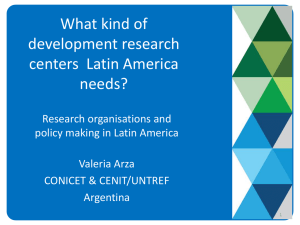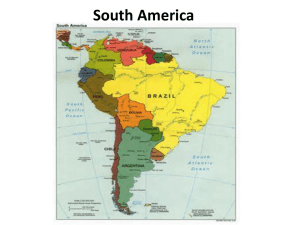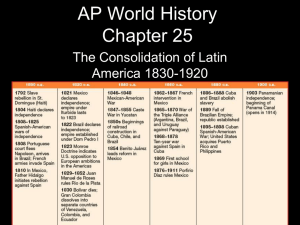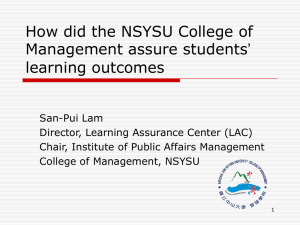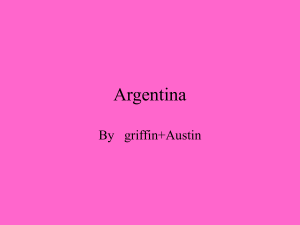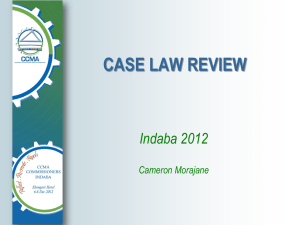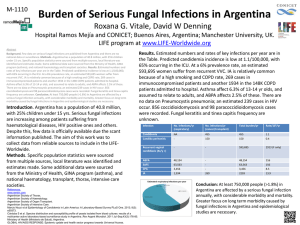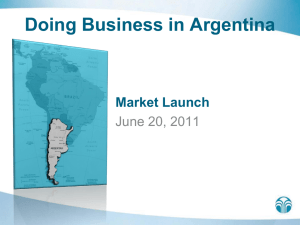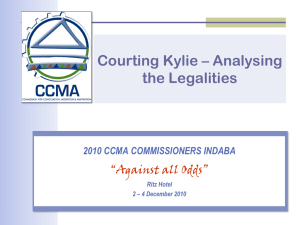Argentina in the Aftermath of International Financial Crisis
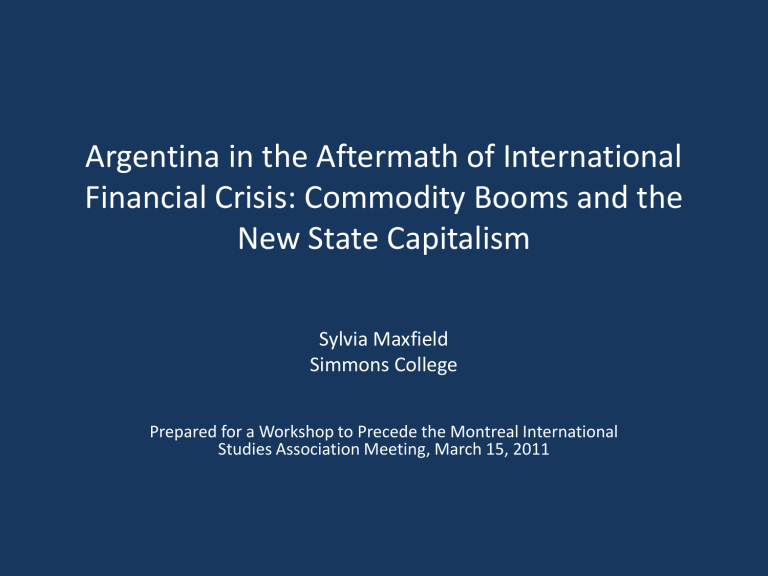
Argentina in the Aftermath of International
Financial Crisis: Commodity Booms and the
New State Capitalism
Sylvia Maxfield
Simmons College
Prepared for a Workshop to Precede the Montreal International
Studies Association Meeting, March 15, 2011
Generalizing Across the Region:
• commodity boom improves external and fiscal balance sheets
• provides room for counter-cyclical policy
• transmission mechanism of the crisis is trade not finance
You Can’t Have a Credit Crunch if there is No Credit
Argentina’s unique situation post-2001 crisis
Argentina’s New State Capitalism
Regional growth over the century
GDP per capita, LAC and Asia relative to US
Gold
Stand.
Interwar US
Postwar
Boom
US &
LAC on par
LAC &
Asian
Tigers outpace
US
LAC &
Asian
Tigers lag
US, with incipient recovery
Alliance for
Progress
ISI Lost
Decade
LAC lags;
Asian
Tigers outpace
US
Slight
LAC increase,
Asian
Tigers take off
LAC slides,
Asian
Tigers accelerat e
Wash.
Cons.
Wash.
Diss.
Cont.
2002
LAC starts to outpace
US
Commodity Prices Against 1970s Base
• OcaOc
Ocampo, Jose Antonio, 2009, Latin American and the global financial crisis,
Cambridge Journal of Economics, 33.
Argentine Growth 3 rd Highest in
Region, 2000-2008
Commodity boom helped improve external balance sheet positions throughout the region and created space for counter-cyclical macro-economic policy
Argentina’s macro-economic policy response
• External and government balance sheets aided by pension fund nationalization in Fall
2008
• Central bank relaxes monetary targeting rules in 2010 (Fernandez fires Martin Redrado when he refuses to do this – confirmation of his successor required a public advertising campaign to win sufficient congressional support)
Transmission mechanism of the crisis is through trade not finance
• Data on correlation of export decline and GDP decline
No banking crises in 2008-2009
• Banking crises in 1980-85 (Argentina, Brazil,
Chile, Colombia, Ecuador, Mexico, Peru,
Uruguay)
• Banking crises 1995-2000 (Argentina, Brazil,
Colombia, Ecuador, Honduras, Jamaica,
Nicaragua, Paraguay, Peru)
• Supervision & regulatory reform; flexible exchange rates (depreciation the norm); central bank independence and price stability
Argentina: No credit to crunch
• Data on credit
Impact of crisis on unemployment much lower than in prior recessions
Changes in unemployment rate (ILO)
Prior recessions: Argentina=1998-2002; Brazil=2001-2002; Chile=1998-1999;
Colombia=1998-1999; Mexico=1994-1995
Argentina: the “bad” left or an example of the new state capitalism?
• Kirschnerismo involves increased state ownership & social spending
Central Government Expenditures (% of GDP)
Room for countercyclical policy and state intervention is shrinking
Fiscal and current account balances (% of GDP)
Argentine fiscal situation in comparative perspective
Growth prospects for remain strong
Real GDP Growth 2009-2011 (OECD)


